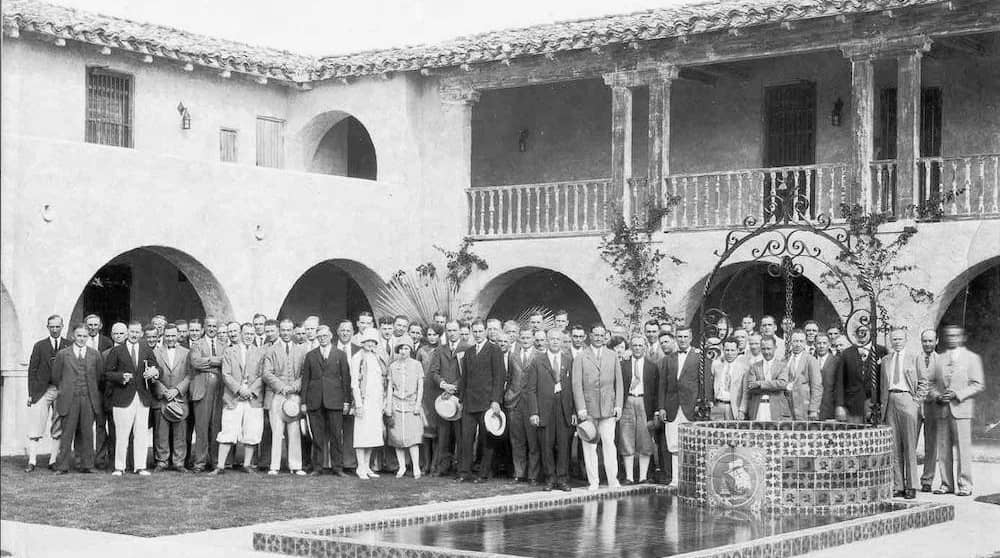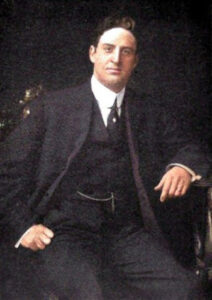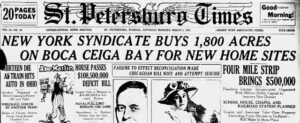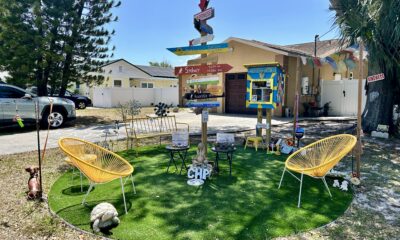Comm Voice
The story of ‘Handsome Jack’ Taylor – Part 1

Welcome to the Catalyst’s Community Voices platform. We’ve curated community leaders and thinkers from all parts of our great city to speak on issues that affect us all. Visit our Community Voices page for more details.
Part 1 of 2.

Ivan Marshall Taylor
There will never be a statue erected in his honor ‒ or a street or park named for him. He is all but forgotten, yet his monuments are all around us. Pasadena’s brick paved streets, dozens of Mediterranean revival homes, Stetson University College of Law, the Pasadena golf course, the ruins of the Bear Creek Gateway and many of the historic homes and buildings in the Jungle area of west St. Petersburg owe their existence to Ivan Marshall (“Jack”) Taylor’s grandiose vision.
Taylor’s positive impact on St. Petersburg and the Jungle neighborhood is not fully appreciated by local historians who tend to view him as a con man (which is true), eager to make a quick buck and then get out of town. But without his involvement, it is questionable whether the Jungle Prada building, Jungle Country Club Hotel and dozens of attractive homes would have been built in the Jungle and Pasadena neighborhoods. The building boom of the Roaring Twenties might have passed us by.
His dreams of an aristocratic resort community were dashed when the land boom ended. Four years after arriving in St. Pete, his Pasadena-on-the-Gulf project was bankrupt.
This is his story.
East Coast Fisheries
In 1918, I.M. Taylor is named president of East Coast Fisheries, a startup company in Portland, Maine, that plans to modernize the fishing industry. His investment firm, I.M. Taylor & Co, underwrites their public stock offering. His agents use misleading information and high-pressure tactics to sell the stock.
Moving to Manhattan
Taylor is confident in the future of the fishing industry. His investment firm moves its headquarters to Wall Street. He leases a Manhattan apartment and remarries. His new wife is Evelyn C. Wood from Brooklyn. On the marriage certificate, her maiden name is listed as Bowdoin, implying she is related to a prominent Maine family ‒ namesake of Bowdoin College ‒ but her real surname is Bowden. For a salesman like I.M. Taylor, upper-class credentials are useful in gaining the confidence of wealthy investors. It is beneficial to Taylor’s business to pretend to marry into the respected Bowdoin family.
The World War. Eat More Fish.
The U.S. declares war on Germany on April 2, 1917. A campaign by the Department of Commerce encourages people to eat more fish.
East Coast Fisheries is thriving thanks to an increase in fish consumption. In September 1918 the company’s largest trawler, the Kingfisher, is torpedoed and sunk by a German U-boat. The crew of 26 survives. I.M. Taylor, company president, announces that the boat was insured and business will continue as usual. Despite the setback, his companies prosper.
In 1920, the Department of Commerce sends Taylor to Europe to learn how to increase fish consumption here. When he returns, he expands East Coast Fisheries by adding more trawlers and further modernizing the fishing, canning, preserving and transporting operations.
Drowning in Debt
In spite of efforts to increase its popularity, eating fish continues to be regarded by many as a sacrifice (for both the war effort and for Catholics who refrain from eating flesh on Fridays).
In late 1920 East Coast Fisheries encounters a cash flow problem. Taylor’s bold ‒ some would say reckless ‒ expansion is blamed. Unsold catch is rotting in warehouses (you might say the company is floundering).
Unable to pay employees and creditors, East Coast Fisheries goes into receivership. It is hoped that the company can recover in a few months. The brilliant engineer of the Panama Canal project and one of the most respected men in America, Brigadier General George Washington Goethals, is named president of the company, but despite his best efforts, the man who successfully directed one of the most difficult engineering projects in world history cannot untangle the financial mess. In the end, the company is sold in parcels for pennies on the dollar. I.M. Taylor & Co. is caught in the undertow, its reputation irreparably damaged. With his companies failing, Taylor flees to Europe taking a large portion of the remaining assets. Irate shareholders sue him.
City Slicker/Fishy Background
After the 1921 trip to Europe, I.M. Taylor makes his way to Florida during the early stages of the land boom. He has enough capital to start a new business. The Florida land boom will provide Taylor an ideal opportunity to put his failures behind him and reinvent himself.
The 45-year-old disgraced New York banker arrives in St. Petersburg in 1922. In his heyday, he had been president of a Wall Street investment firm with 30 in its employ ‒ that was I.M. Taylor & Co. ‒ as well as the CEO of a company with 60 million dollars in assets and hundreds of employees.
To conceal his identity, he calls himself “Handsome Jack” Taylor. Traveling with him is his wife, Evelyn. The Bowdoin name isn’t well known in Florida, so her status is upgraded to that of a DuPont heiress ‒ a ruse to establish Taylor’s financial legitimacy and elite connections.
Inspired by emerging land boom cities like Miami Beach, Hollywood-by-the-Sea, Coral Gables and Hialeah, Taylor buys 1800 acres (2.81 square miles) on the west side of St. Petersburg and renames the area Pasadena-on-the-Gulf.

As historian Walter P. Fuller told it, Jack Taylor presented Evelyn as the financial head of the $500K land deal. It was Evelyn Du Pont Taylor who pulled seven $10,000 bills from her stockings for the down payment (she only needed one of those, but it was made certain that everyone in the room saw the other six bills). The paperwork is signed E.C. Taylor (Evelyn C.), not I.M. Taylor. The performance is successful in branding the DuPont name and reputation on Pasadena-on-the-Gulf. Initially, Jack focused on selling lots to eager land speculators near his New York City office. According to one source, “of the 108 lots he sold in one area of Pasadena, 106 of them were purchased by people who lived within a few miles of Times Square.”
Some thought that Taylor was only interested in making a quick profit. That may have been true at first, but when land sales surged and new homes were built, Taylor began to believe in the “aristocratic resort community” that he had promised his investors. He had envisioned a new city with a luxury hotel, beautiful homes, brick-paved streets, wide boulevards, golf courses, a university, miles of bridle paths, ornate subdivision entrances, public schools, a railroad station, a chapel, an exotic bird exhibit, a wildlife park, aquatic gardens, tropical plant nurseries and an island full of monkeys. Many of these improvements were realized.








